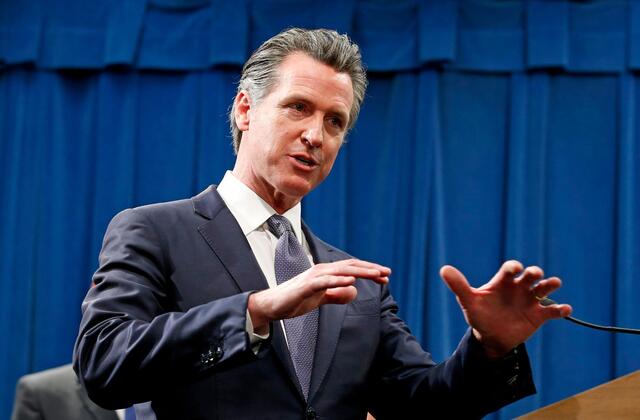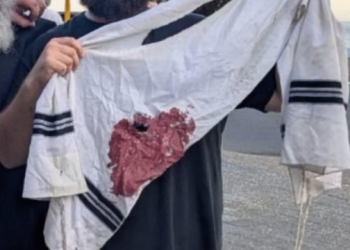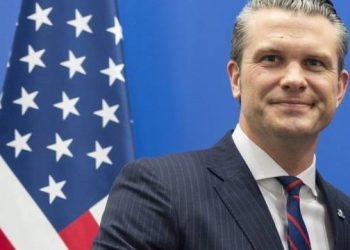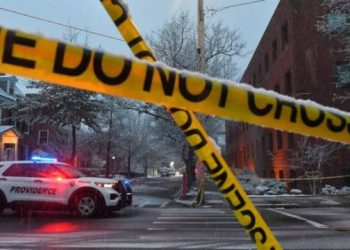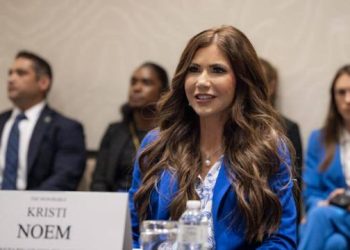When President Donald Trump arrives in California on Friday to survey the wildfires devastating metropolitan Los Angeles, Governor Gavin Newsom will be among those greeting him — despite not being formally invited.
“I look forward to being there on the tarmac to thank the president, welcome him, and ensure he has all the resources for a successful briefing,” Newsom told reporters on the eve of Trump’s visit.
The wildfires, which have claimed nearly 30 lives and displaced tens of thousands, have sparked intense political clashes. Trump has repeatedly criticized Newsom’s handling of the crisis, accusing him of mismanaging forestry and water resources and suggesting he should step down.
“Gavin Newscum should resign. This is all his fault!!!” Trump wrote in a social media post on January 8, using his derogatory nickname for the governor.
During an interview with Sean Hannity earlier this week, Trump said, “This fire was just raging, and then it would catch to another area, another area, another area. It took a week and a half — and I’ve never seen anything like it. We look so weak.” He reiterated his belief that poor water management exacerbated the fires.
Trump and some congressional Republicans have proposed tying federal wildfire aid for California to specific policy changes, including water resource management. Before his arrival in Los Angeles, Trump outlined two priorities for federal assistance:
“I want to see two things in Los Angeles: Voter ID so that the people have a chance to vote. And I want to see the water be released and come down into Los Angeles and throughout the state. After that, I will be the greatest president that California has ever seen,” Trump said.
Meanwhile, Newsom signed a $2.5 billion state relief package this week, emphasizing the need for additional federal support. He countered Trump’s claims by stating that southern California’s reservoirs were full when the fires began and that hurricane-force winds, not water shortages, fueled the crisis.
Trump accused Newsom of spreading misinformation, while Newsom described Trump’s comments as “hurricane-force winds of mis- and disinformation.” In a letter to Congress last week, Newsom appealed for federal assistance, writing, “Our long national history of responding to natural disasters, no matter where they occur, has always been Americans helping Americans, full stop.”
The animosity between the two leaders predates this crisis. It dates back to 2016 when Newsom was California’s lieutenant governor, and their clashes continued during the 2024 presidential campaign. Following Trump’s reelection, Newsom vowed to “Trump-proof” California, which Trump dismissed as an effort to block his agenda.
Despite their ongoing feud, Newsom has emphasized collaboration in addressing the disaster. “In the face of one of the worst natural disasters in America’s history, this moment underscores the critical need for partnership, a shared commitment to facts, and mutual respect,” Newsom said earlier this week.
Political scientist Jack Pitney of Claremont McKenna College noted the challenges Newsom faces: “As a governor of California, he needs to work with the president to get federal aid for the state. As a national political figure, he feels pressure to attack Trump. It’s hard to do both of those at the same time.”
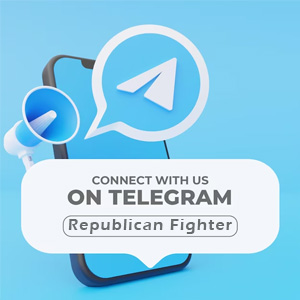 Telegram is where we really talk. Don't miss out!
Telegram is where we really talk. Don't miss out!

